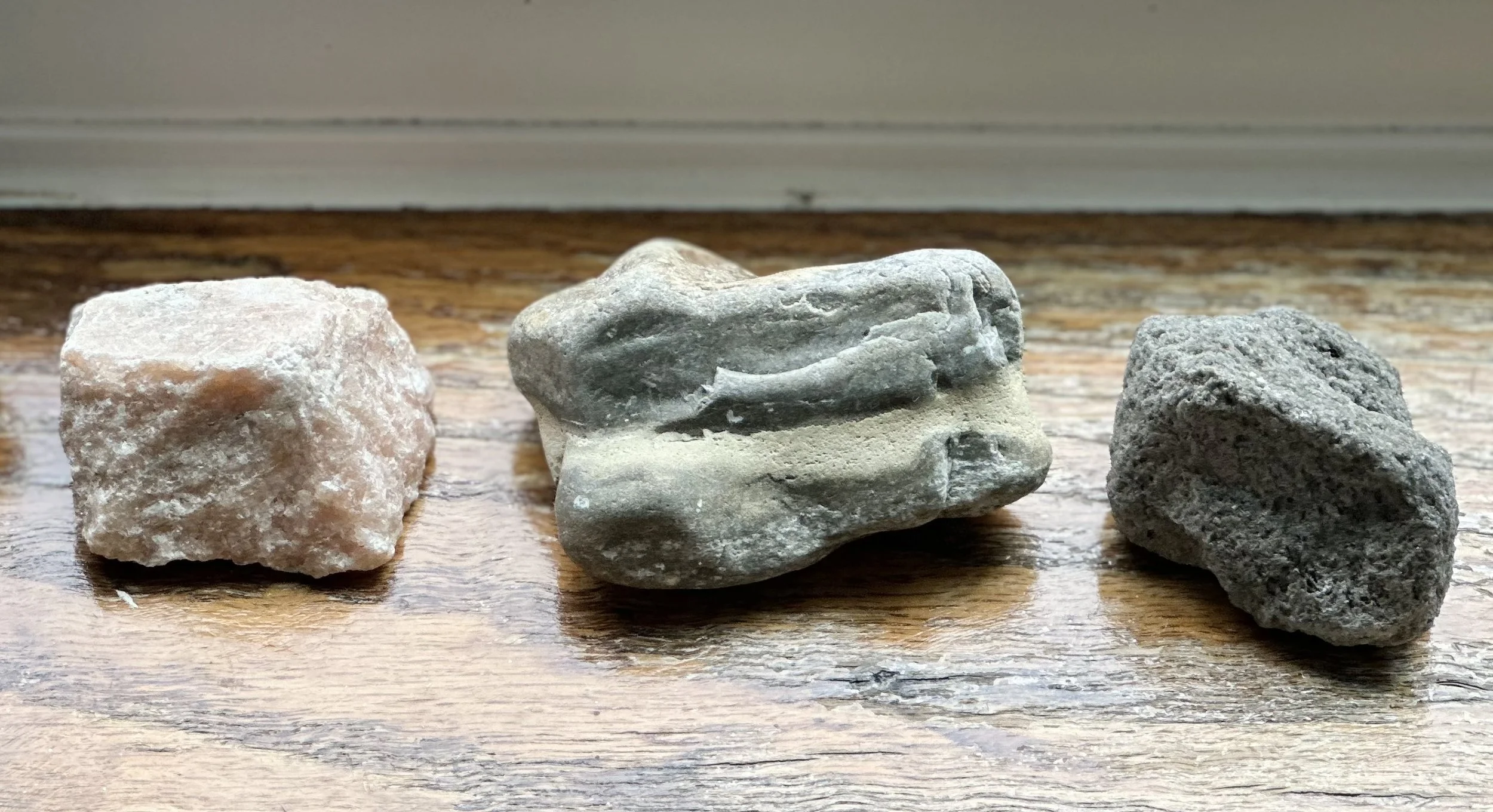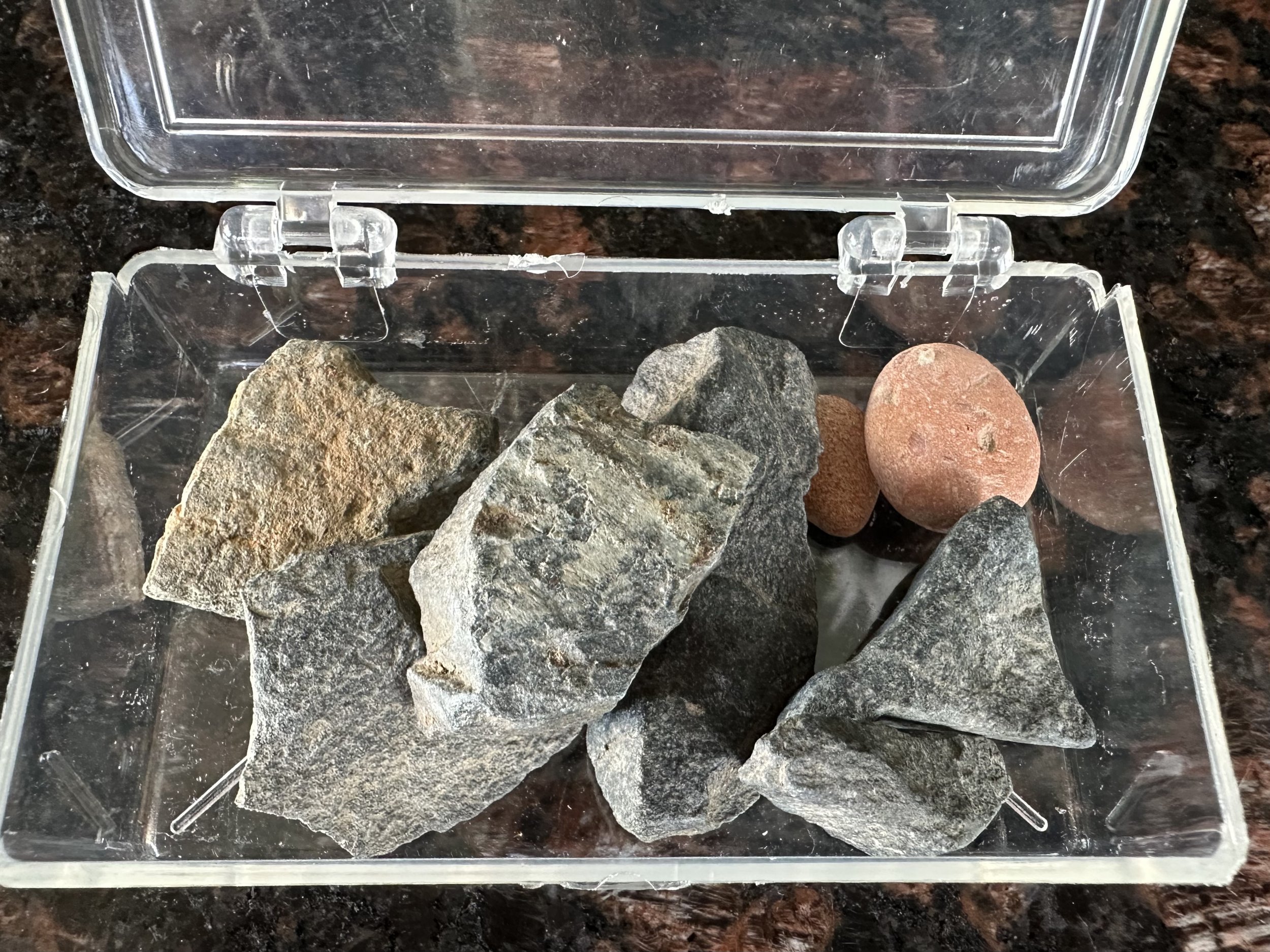It’s not just a rock
These three rocks are on my window sill. Starting from the right, these are igneous, sedimentary and metamorphic rocks. This is my best guess, and I could be wrong. I am also guessing the pinkish rock is quartzite.
When I was a kid, on my walks to school, I noticed a rock on display in the front yard of a house I passed everyday. It was just a plain rock, nothing special; it was about the size of a cat. For some strange reason that I cannot explain, I felt a connection to this rock. It was my rock friend and I would remember to look for it on my way to school.
I didn’t tell anyone about my rock friend. No one I knew talked about their rock friends. It’s just a rock.
When I taught science to elementary students, we learned that there are three kinds of rocks: sedimentary, metamorphic and igneous. Igneous rocks are formed when magma, or melted rock erupts and then cools on the Earth’s surface. Sedimentary rock is formed by layers of matter that accumulate, compress and harden over millions of years. Rocks subject to conditions of intense heat or pressure below the Earth’s surface transform into metamorphic rock.
Elementary science students learning about geology are sometimes assigned to write a story of one rock as it moves through its life cycle. Of course, the students give their rock a name. Here is my attempt at this assignment. My rock’s name is Rocky.
Rocky’s Story
Several million years ago, north of where Lake Michigan is now located, a volcano erupted and streams of hot lava flowed down the side of its newly formed dome. Rocky, an igneous rock, formed as the lava streams cooled. Over the centuries repeated eruptions formed a mountain range. Quickly, soil accumulated and vegetation started growing. With each passing century, layers of organic matter compressed the igneous rock into sedimentary rock.
Deep under the Earth’s surface, massive tectonic plates constantly pushed against each other. Under immense pressure one of the plates finally shifted and converged above the other plate. The earthquakes pushed the sedimentary rock deeper inside the mountain, the heat and pressure altering its composition. Rocky is transformed into quartzite, a metamorphic rock.
A million years or so later, glaciers covered the mountains above Rocky. There is a drastic change when the temperature rises and the glaciers start to melt. The massive weight of the melting glacier slowly shoves tons of buried Earth’s materials south to the present day Great Lakes Region. Rocky was deposited at the edge of a basin left by the disappearing glacier. Twenty thousands years ago, this basin filled with glacier water and precipitation and formed Lake Michigan.
One day I took a swim at Pratt Beach in Rogers Park. I spotted a sparkling quartzite rock washed up among the boulders on the shoreline. I picked it up, slipped it into my pocket and brought it home. I put it on my window sill.
Rocks inform us of geological events that have occurred in the Earth’s past. Each rock offers a story of our planet. It takes millions of years, but rocks move through a life cycle that continually renews the Earth’s surface. It’s not just a rock,
Take it or leave it suggestion #22: Take a walk on the beach and look for rocks
I brought these rocks home with me on various vacations. But now I don’t remember where I found them. While in different proportions, oxygen, calcium, magnesium and iron are found both in humans and rocks. Hmmmm, why not have a rock friend?

